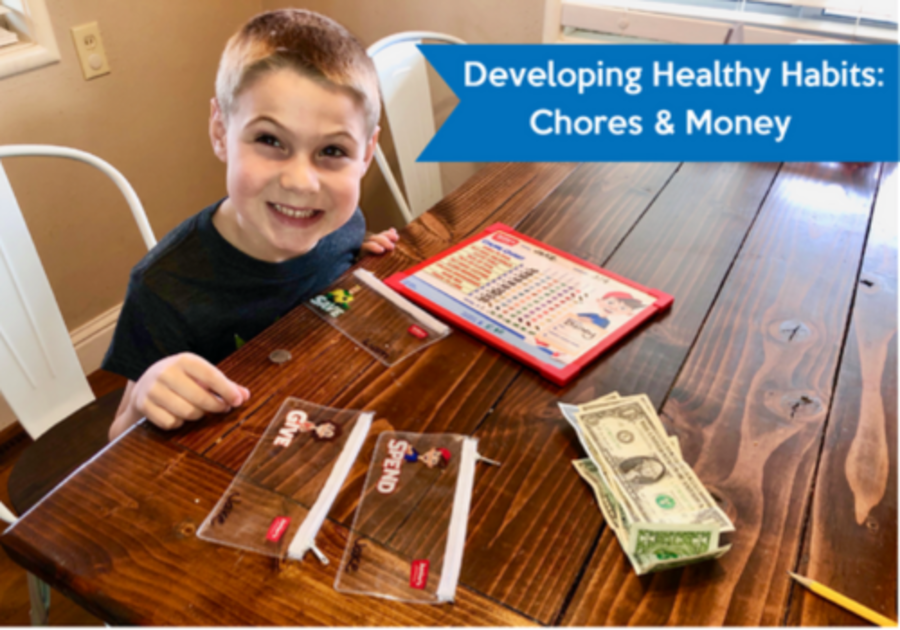Shopping with kids in tow is something a lot of parents dread! It seems like begging, crying, and tantrums often come from trips to the store. I used to dread it too, but I’ve found a way to keep the begging at bay, by teaching my kids about managing money.
It turns out managing money is a skill most kids can learn at an early age -- and one that will translate to long-term healthy habits with spending.
Going through this process of learning about money with my kids has been trial and error. We relied on the Financial Peace Jr. kit by Dave Ramsey to help us create a system that worked for us, but there are other great products out there to help kids learn about money.
Here are six tips we learned from Dave Ramsey's Financial Peace Jr. kit that have worked for us when it comes to teaching our kids about money:
1. Keep money in a clear envelope or jar
By placing it in a clear container, kids can actually see their money -- and watch it grow! Watching money pile up in their container is exciting for little ones! It's also a good chance to exercise math skills while tracking their earnings.
2. Set the example for your kids
Talk openly about budgeting in front of your children. We use an app for tracking our expenses and it shows fun pie charts of what we’ve spent during the month and what we have left in specific categories. The graphics make it easy for even young kids to understand.
3. Pay commission, not allowance
Learning that work equals money is a concept I wanted to instill in my kids early on. We make that correlation through a chart hanging on our fridge. The chart gives our kids a list of tasks they can complete to earn money throughout the week. At the end of each week, they add up their total and get paid for each task they completed. (Younger children sometimes need an instant payout for their chore, but as they get older, they can start to learn about “Pay Day.”). I always make sure that I have been to the bank for small bills and coins so I’m ready for Pay Day!
4. Let kids spend their own money
Physically pulling $10 out of a wallet and exchanging it for a toy helps children understand that things cost money. It means a lot more to them to hand over the money themselves than when the toy or item they're buying with their own money is just added to my cart.
5. Teach kids to save
On their chart, the kids pick something that they are saving for, whether that be an upcoming vacation or a specific toy. Each week on Pay Day they divide their commission into three pots: saving, spending, and giving. Our kids keep 50 percent to spend, save 40 percent, and give 10 percent.
6. Encourage generosity
My son has chosen to give his money to the homeless shelter, to our church, and to different causes that he has learned about at school. Teaching your children to give early helps them start to look for ways in which they can help others.
Need some ideas for age-appropriate chores? Check out the video below!


